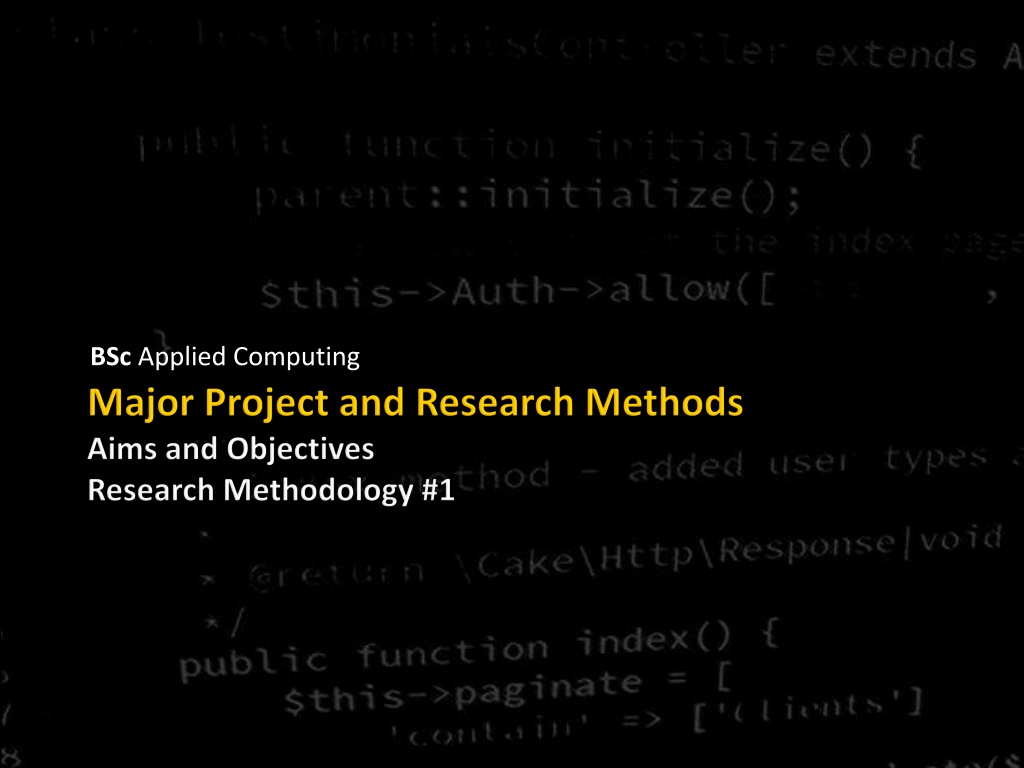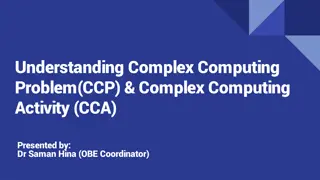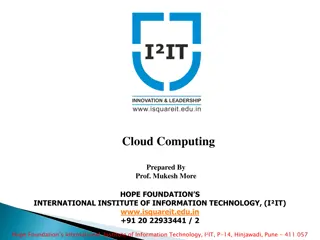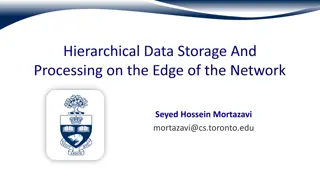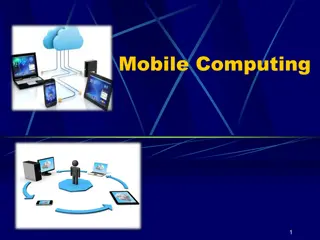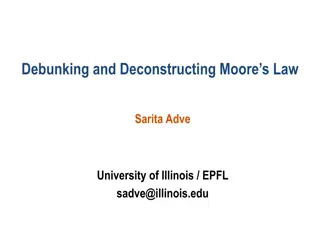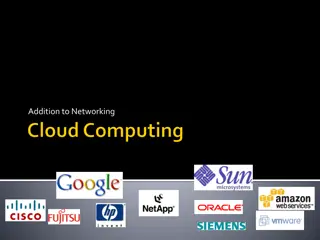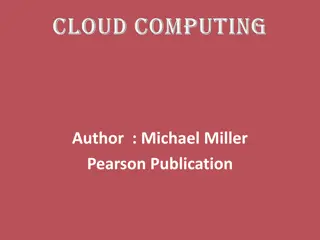Exploring Research in the Field of Computing and its Significance
Research in computing aims to contribute new knowledge, advance current theories, and enhance efficiency in networks, computers, and processes. The project proposal outlines the objectives and methods to achieve these goals, emphasizing the importance of making original contributions to the field. Research is a systematic process of inquiry to uncover new insights and innovations in software-related computer science, focusing on inventions and improving usability.
Download Presentation

Please find below an Image/Link to download the presentation.
The content on the website is provided AS IS for your information and personal use only. It may not be sold, licensed, or shared on other websites without obtaining consent from the author. Download presentation by click this link. If you encounter any issues during the download, it is possible that the publisher has removed the file from their server.
E N D
Presentation Transcript
What is research? What is Research in the field of Computing? The Project Proposal Aims and Objectives Research Methodology: The Research Onion Research Methodology: Philosophy Research Methodology: Approach Task
Research is creating new knowledge [1] Neil Armstrong Research is to see what everyone else has seen and, and to think what nobody else has thought [1] - Albert Szent-Gyorgyi Research means that you don t know, but are willing to find out [1] - Charles F. Kettering If we knew what we were doing, it would not be called research, would it? [1] - Albert Einstein
The aim of research is to make an original contribution to current knowledge. It may also advance knowledge in directions other than the currently accepted theories. Research must therefore be: Embedded in a recognisable field of study, recognising and building upon past works. Of interest to other researchers in the same (and possibly other) field. [3]
Software-related computer science usually produces inventions, rather than discoveries. Discoveries are still possible. The objective of research in computing is often focussed on networks, computers or processes and is concerned with making these more efficient, reliable or usable. A research outcome is therefore only as useful as the research community or the public think it is.
The purpose of the project proposal is to establish exactly what is to be achieved by the project and to establish a plan to do this. A research proposal is a simply a structured, formal document that explains what you plan to research (i.e. your research topic), why it s worth researching (i.e. your justification), and how you plan to investigate it (i.e. your practical approach). [4] The purpose of the research proposal [ ] is to convince your research supervisor, committee or university that your research is suitable (for the requirements of the degree program) and manageable (given the time and resource constraints you will face). [4] You will be required to deliver a project proposal document for your major project prior to the delivery of your interim viva presentation (More on this in a few weeks).
The aims of a project are its ultimate goals. An indication of the quality and/or extent of the implementation would ideally form an aspect of the project aim. Project objectives should indicate how the aims are to be met. Objectives should conform to the SMART target framework. Objectives should clearly describe the individual sub goals of the project, which are required to meet the ultimate goal (the aim). An analysis of how the objectives are to be achieved including a breakdown of the project into identifiable sub-tasks should be form a part of the project plan.
In a nutshell: Aim = what you hope to achieve. [5] Objective = the action(s) you will take in order to achieve the aim. [5] [6]
Project aims and objectives are important aspects of the project proposal. They enable you to: Gauge the scale of the work. Make an estimate at the level. Offer a clear idea as to the practicality of the project where the SMART paradigm is followed. Most importantly, aims and objective serve to keep the project organised and progressing in the right direction(s). The researcher should frequently revisit project aims and objectives as these may change to some extent as the project progresses and develops.
The phrasing of objectives must include higher order verbs that indicate that this is level 5 or 6 standard of work. For example, to evaluate critically , to analyse the , to design and develop .Don t use verbs such as list , state because they are too easy to achieve. Research question: Why have organisations introduced project teams for software development? Research objective: To analyse organisations objectives in the introduction of software development project teams. Research question: How can the effectiveness of software development project teams be measured? Research objective: To establish suitable criteria with which to evaluate the effectiveness of creating software development project teams.
Each of your objectives should conform to the SMART model. For each of your objectives, ask yourself if they are: [7]
Specific to the project, and within the project. For example the objective: To reduce the effects of global warming. is far too vague. On the other hand, To reduce the levels of plastic pollution in the South China Sea.' is a much clearer indication of what the project must achieve. Your project objectives must be well defined, clear, and unambiguous.
Objectives need to be defined in as measurable and subjective terms as possible. Measurability will depend on the nature of the objective and may be in terms of such things as performance, cost, effort, percentage change, amount of time, deliverables, quality levels, numbers of events, agreements, approvals, commencement or termination of something, numbers of people or organisations, or a benefit to be achieved within the life of the project. The previous example might be made measurable by saying ' To reduce the levels of plastic pollution in the South China Sea by 30%.'
It must be possible to achieve the objective in practical terms and also within whatever time target has been set (see time-bound later). You might need to consider constraints of technology, people and processes when assessing achievability. You should be realistic without being too conservative as project objectives will often be challenging.
Objectives must contribute towards the overall success of the project. Make sure the objective, or some part of it is not just there because of a whim or has been influenced by an agenda that is not aligned with the project purpose. Researchers will often abandon specific lines of enquiry and re-assess their aims and objective when particular approaches, technologies or other aspects of the project prove to be irrelevant or useless. This happens more than you may think!
It is essential to have a target date by which each objective should be achieved. Sometimes there will be one date that applies to most or all objectives. In other cases each project objective may require its own time frame. Setting interim time targets may also be useful for certain types of objective. This will make the objective trackable so that you can measure whether or not you are on course to achieve it and hence can take early action if not. The previous example can be re-written to conform to time bounds by saying 'To reduce the levels of plastic pollution in the South China Sea by 30% by January 1st2030.
Title: An Investigation and Evaluation of the Impact of Social Media on Today s Enterprises. Aim: To discover the various negative and positive impacts of social media on current businesses, and evaluate the impact objectively and quantitatively. Objectives: Conduct a literature review on social media and its impact on businesses. Discover and determine social media s history. Identify and analyse positive impacts. Identify and analyse negative impacts. Assess the balance of impact on enterprise activities.
Title: A Comparison of Web Application Implementation Times and Methods of Improvement. Aim: Create and application to generate custom PHP code, with reusability and automatic code generation. Objectives: Evaluate code editors and code generators for auto-complete functionality. Assess the aspects of the development phase for practicability of auto-generation. Evaluate the facilities in Visual Studio for ASP.NET auto-generation. Assess implementation times for designs using a variety of available tools for PHP/AJAX. Quantitatively analyse development times for 15 software engineers developing standard items of functionality including database connection, Email scripting, user login and pagination, comparing ASP and PHP development approaches.
A Research Methodology is the specific procedures or techniques used to identify, select, process, and analyse information about a topic. There are a lot of methodologies used by researchers and some are better for computing research than others. A good starting point is the research onion . [8] [9]
The first layer of the onion, research philosophy requires definition. This creates the starting point for the appropriate research approach, which is adopted in the second step. In the third layer, the research strategy is adopted, and the fourth layer identifies the time horizon. The fifth layer represents the stage at which the data collection methodology is identified. [9]
At each stage, decisions should be based on, and guided by the aims and objectives established for the project. [9]
The very first layer of the onion is the research philosophy. [..] the research philosophy is the foundation of any study as it describes the set of beliefs the research is built upon. Research philosophy can be described from either an ontological or epistemological point of view. [ ], ontology is the what and how of what we know [ ], what is the nature of reality and what are we really able to know and understand. For example, does reality exist as a single objective thing, or is it different for each person? Epistemology, [ ], is about how we can obtain knowledge and come to understand things [ ], how can we figure out what reality is, and what the limits of this knowledge are. [8]
Your research philosophy will depends on the way that you think about the development of knowledge as the world perspective and practical consideration of each researcher are different. A researcher may focus on product quality processes adopted by manufacturers of PCs and Laptops. Alternatively, a researcher may be concerned with psychological strategies applied by suppliers to lure consumers, in the same sector. While the former is concerned with facts, the other is concerned with psychology. There are two main schools of research philosophy: * Positivism. Phenomenology.
Your research approach is the broader method youll use for your research inductive or deductive. It s important to clearly identify your research approach as it will inform the decisions you take in terms of data collection and analysis in your study [ ]. Inductive approaches entail generating theories from research, rather than starting a project with a theory as a foundation. Deductive approaches, on the other hand, begin with a theory and aim to build on it (or test it) through research. [ ] An inductive approach could be used in the study of an otherwise unknown isolated community. There is very little knowledge about this community, and therefore, research would have to be conducted to gain information on the community, thus leading to the formation of theories. On the other hand, a deductive approach would be taken when investigating changes in the physical properties of animals over time, as this would likely be rooted in the theory of evolution. In other words, the starting point is a well- established pre-existing body of research. [8]
You will work in groups of three which you will organise for yourselves. Research and evaluate: The philosophies: Positivism Phenomenology The approaches: Deductive Inductive Examples of computer projects should be discussed for each philosophy and approach. Prepare and deliver a presentation for the next session.
All group members should contribute equally to the assignment so share the workload between group members. It is poor practice to work completely independently and only bring the work together at the 11th hour. All work should be merged into a final outcome in plenty of time for all members to: Familiarise themselves with the final outcome. Ensure all work is consistent and well presented. Ensure all work produced meets the requirements of the task.
What is research? What is Research in the field of Computing? The Project Proposal Aims and Objectives Research Methodology: The Research Onion Research Methodology: Philosophy Research Methodology: Approach Task
No? Make a start!
